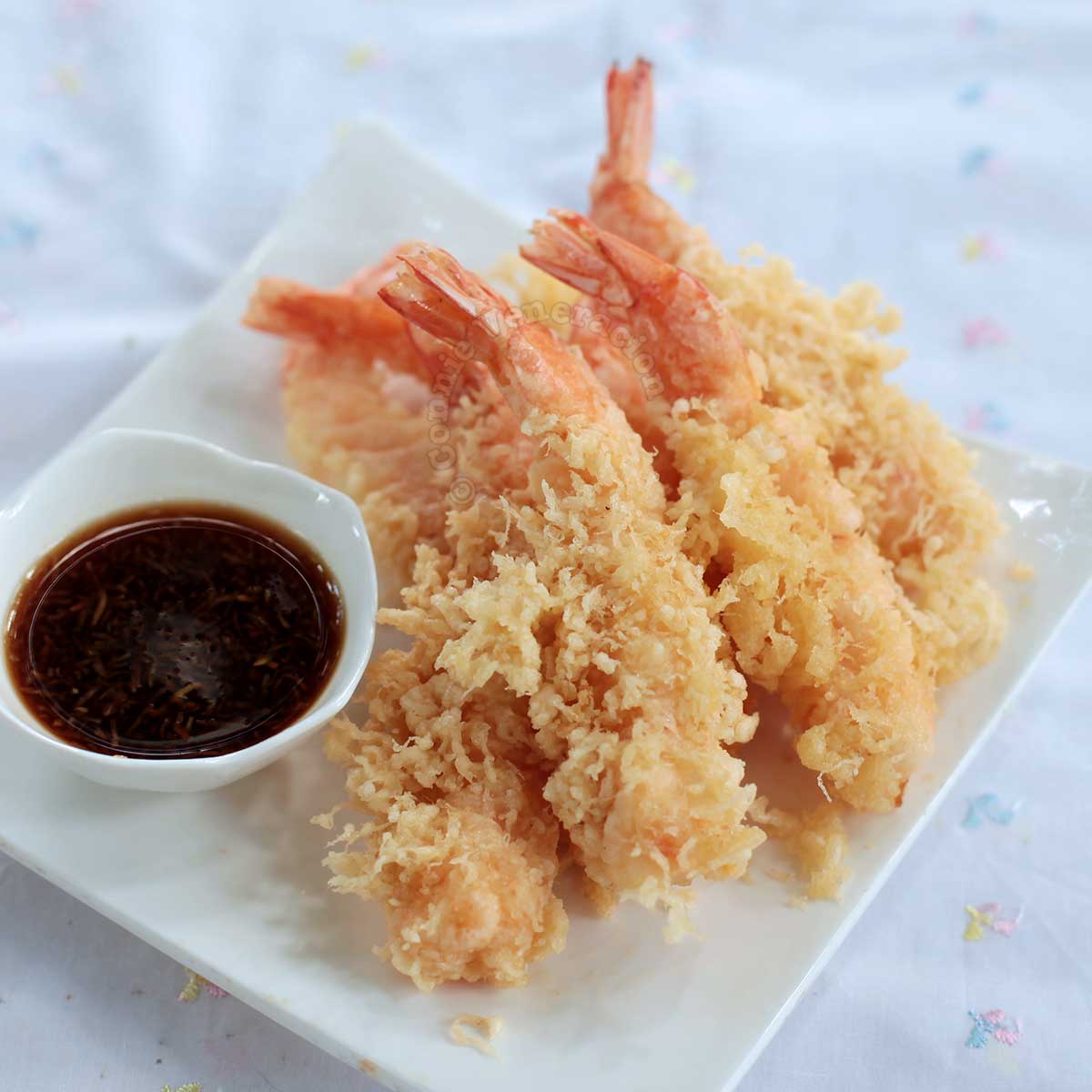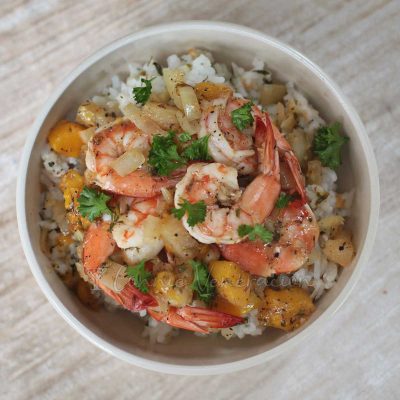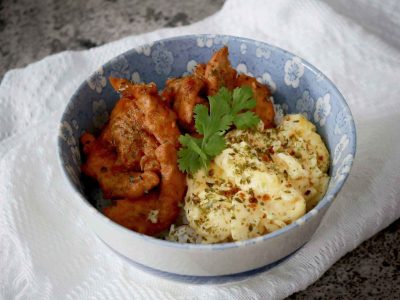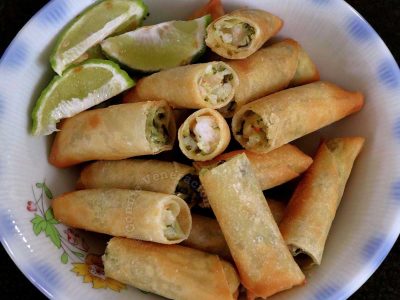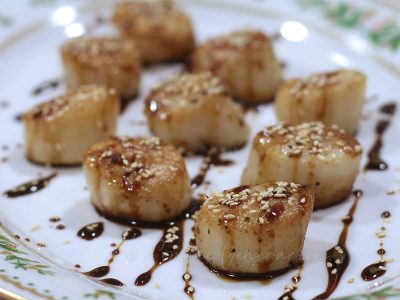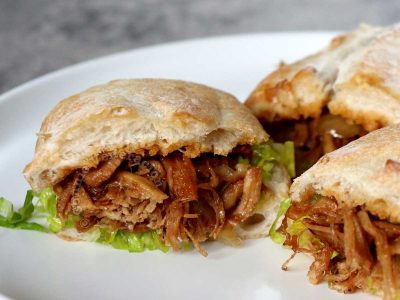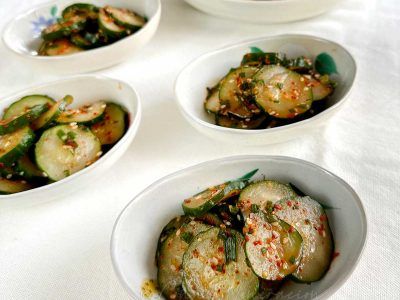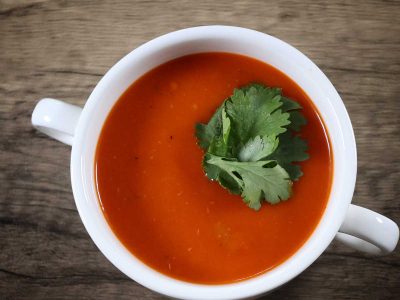If tonkatsu was my introduction to Japanese cuisine, for my daughters, it was shrimp tempura. Whenever we dined at a Japanese restaurant, they ordered it. But Japanese restaurants are pricey so they couldn’t have their tempura fix as often as they liked. We tried making it at home but we just couldn’t get the right texture for the batter.
It wasn’t until our younger daughter, Alex, went to culinary school that our home cooked tempura became as good as restaurant tempura — better even because we use large whole shrimps without cutting them down in half lengthwise the way shady restaurants do.
Thanks to Alex’s culinary training, we now know how to keep the shrimps straight (curved shrimp tempura means the shrimps weren’t properly prepped), how to mix the batter correctly and how to drizzle batter into the oil over the battered shrimps.
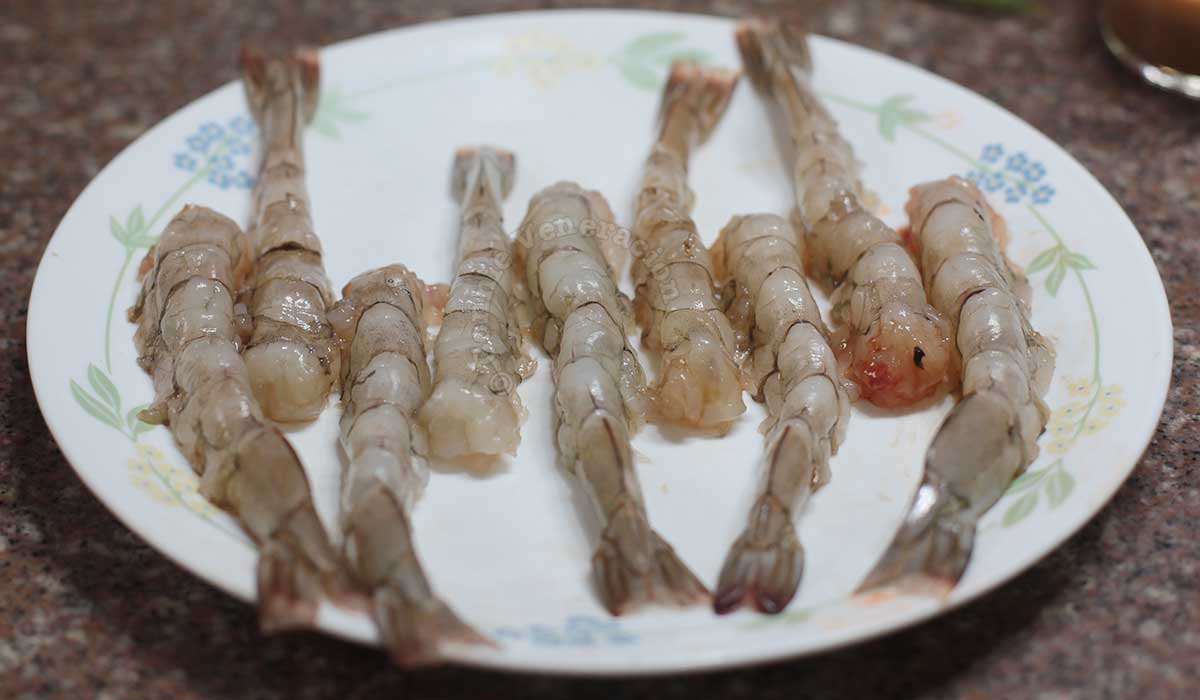
How do the shrimps stay straight during frying?
Right. Shrimps do curl when cooked. Why is it that in restaurants the shrimps are straight and not curled? There is a technique which, in a nutshell, is called scoring. See the step-by-step guide for prepping shrimps properly when cooking tempura.
How to clean, peel and devein shrimps and prawns
How shrimps and prawns should be deveined and prepped depends on how they are intended to be cooked. There is a simple way and there is a special way if you don’t want the shrimps or prawns to curl during cooking. Don’t throw away the shrimp heads and shells because you can make shrimp broth with them.
How does the batter stick to the shrimps?
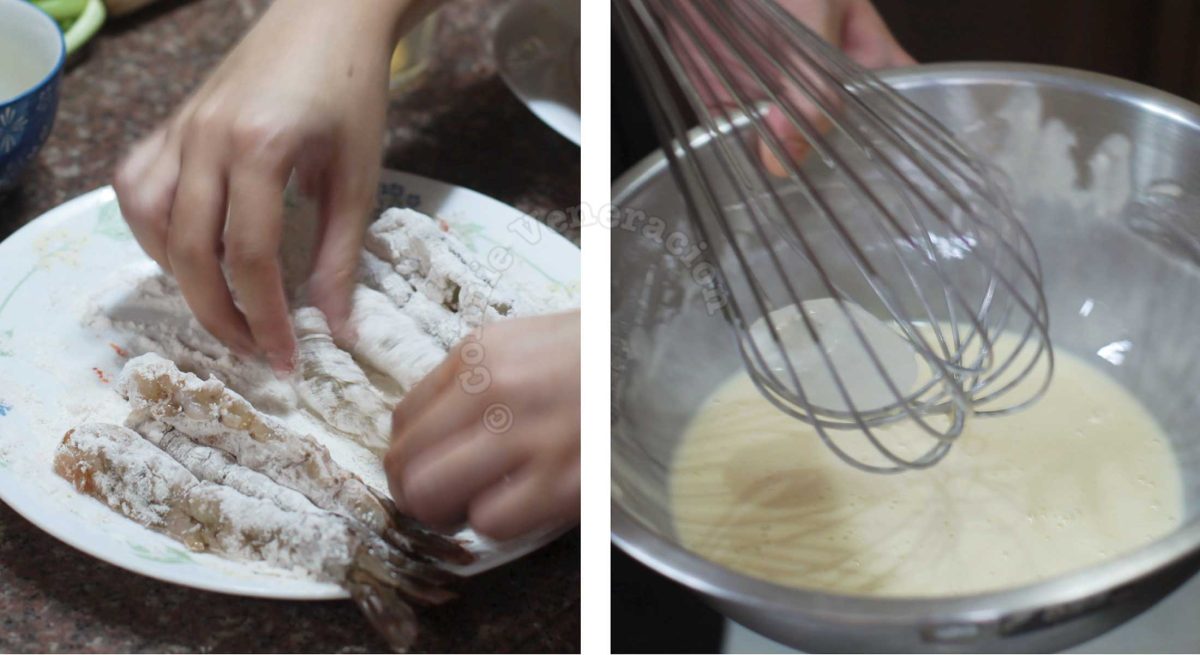
Flour. You have to coat the shrimps in flour before dipping it in batter. Tempura batter is quite thin (it’s not supposed to turn breadlike during frying) and, without the flour, the batter will drip off before the shrimp is dropped in hot oil.
How does the batter turn so crisp?
Ice. The batter has to be cold. Drop pieces of ice into the batter and remember to stir the batter often as you cook the shrimps in batches.
How does the batter acquire that signature lace-like texture?
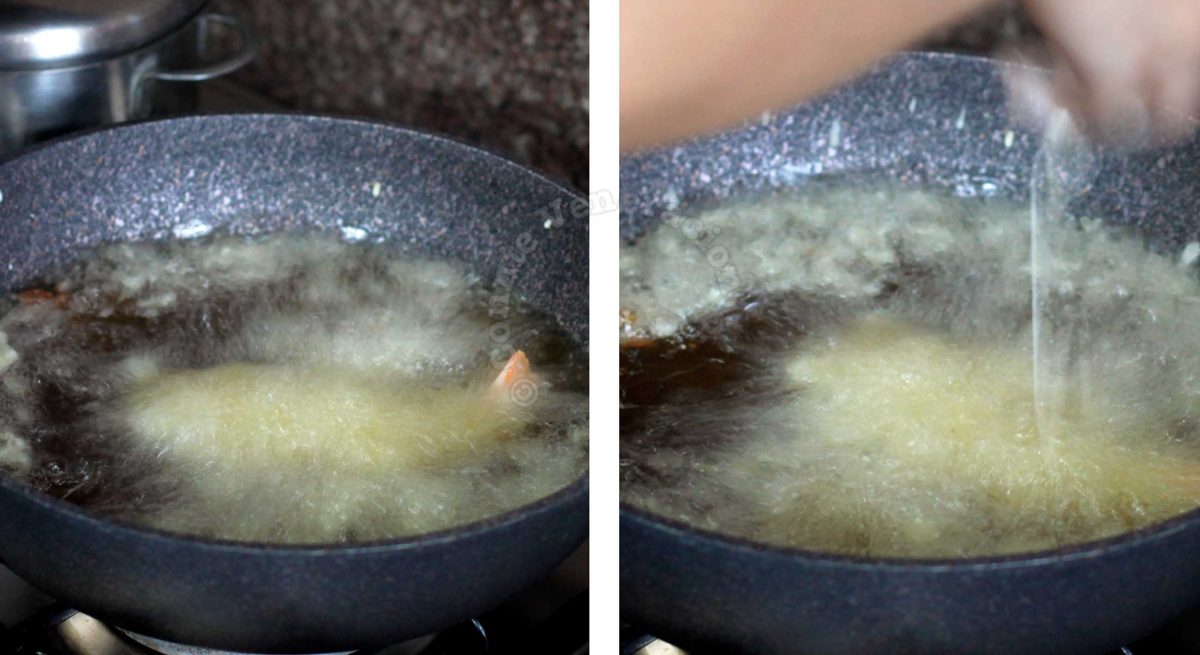
Well, you don’t just dip the shrimps in batter — you also drizzle batter into the oil during frying. Drizzle it over and around the shrimps and you’ll get that beautiful texture.
Ebi (shrimp) tempura
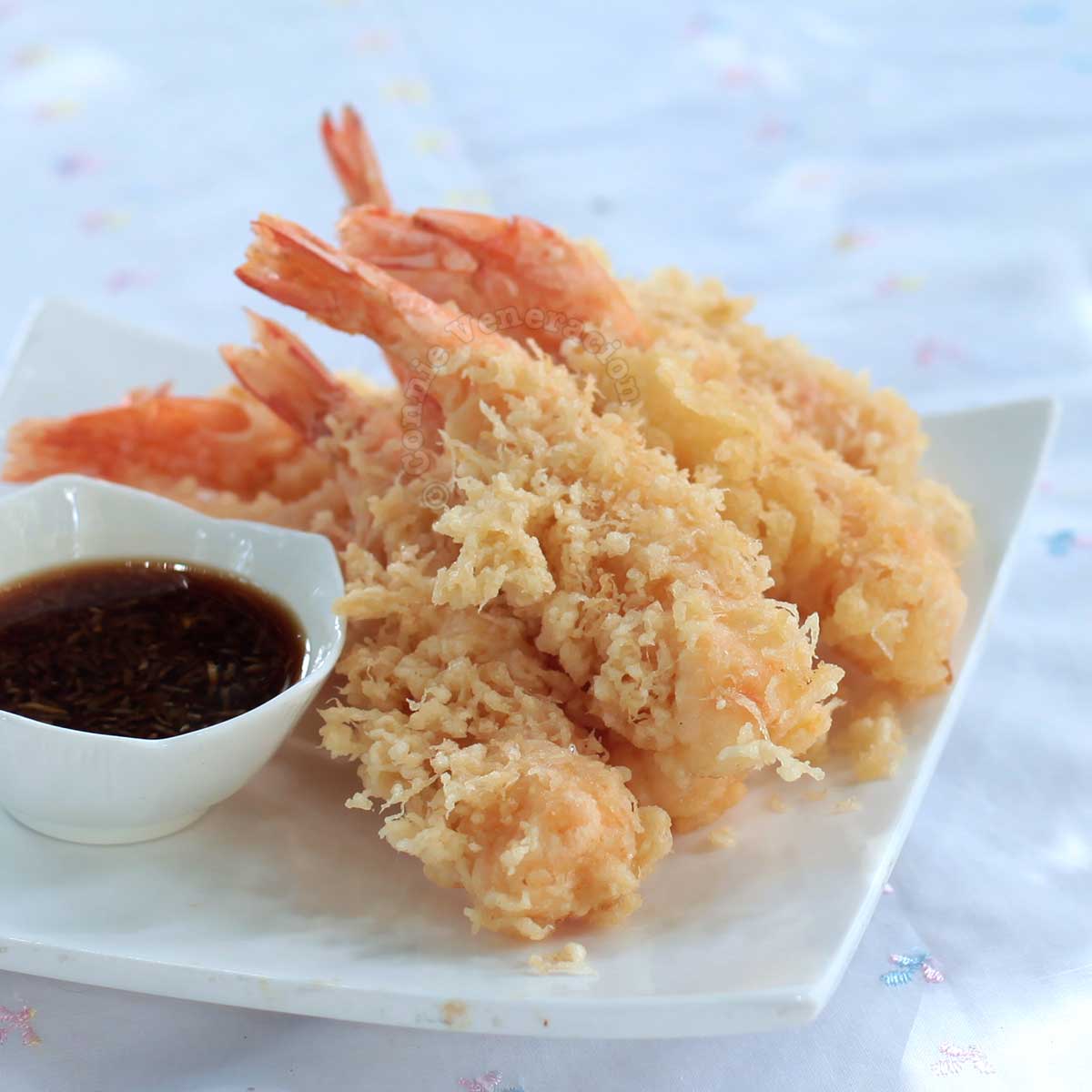
Ingredients
Tentsuyu (dipping sauce)
- ¼ cup dashi
- 1 tablespoon soy sauce
- 1 tablespoon mirin
- ½ teaspoon grated ginger
- ½ teaspoon grated daikon
Shrimps
- ¾ kilogram shrimps about 12 pieces
- 2 tablespoons all-purpose flour
- 3 cups cooking oil (you may need more depending on the size and shape of your pan)
Batter
- 1 cup corn starch
- ½ cup all-purpose flour
- 1 egg
Instructions
Make the dipping sauce
- Make the tentsuyu sauce by mixing together all the ingredients. Set aside.
Prepare the shrimps
- Place cleaned the shrimps on a plate in a single layer and sprinkle two tablespoons of flour over them. Toss lightly to cover the shrimps completely with a thin coating of flour.
- At this stage, start heating the cooking oil in a wok or frying pan. Make sure that the oil is at least three inches deep.
Make the batter
- Mix together the flour, starch and egg with half a cup of cold water.
- Add ice to the batter and mix until you have a rather thin but not watery batter. The consistency should be thinner than pancake batter.
Fry the shrimps
- Test the temperature of the oil. The ideal temperature is 350F. If you don’t have a thermometer, drizzle in a little batter. If it sinks, the oil is not hot enough. If it browns within a few seconds, the oil is too hot. Adjust and keep testing until you get the correct temperature.
- Dip each shrimp in the batter then drop into the hot oil. Fry no more than two or three pieces at a time.
- Dip your (clean) fingers in the batter then drizzle the batter directly over and around the shrimps.
- Fry the shrimps for one to two minutes or just until crisp, flipping halfway through for even cooking.
- Scoop out and move to a rack or strainer.
- Scoop out any excess batter in the oil and move to a plate before frying the next batch.
- Serve your ebi (shrimp) tempura immediately with tentsuyu for dipping.

